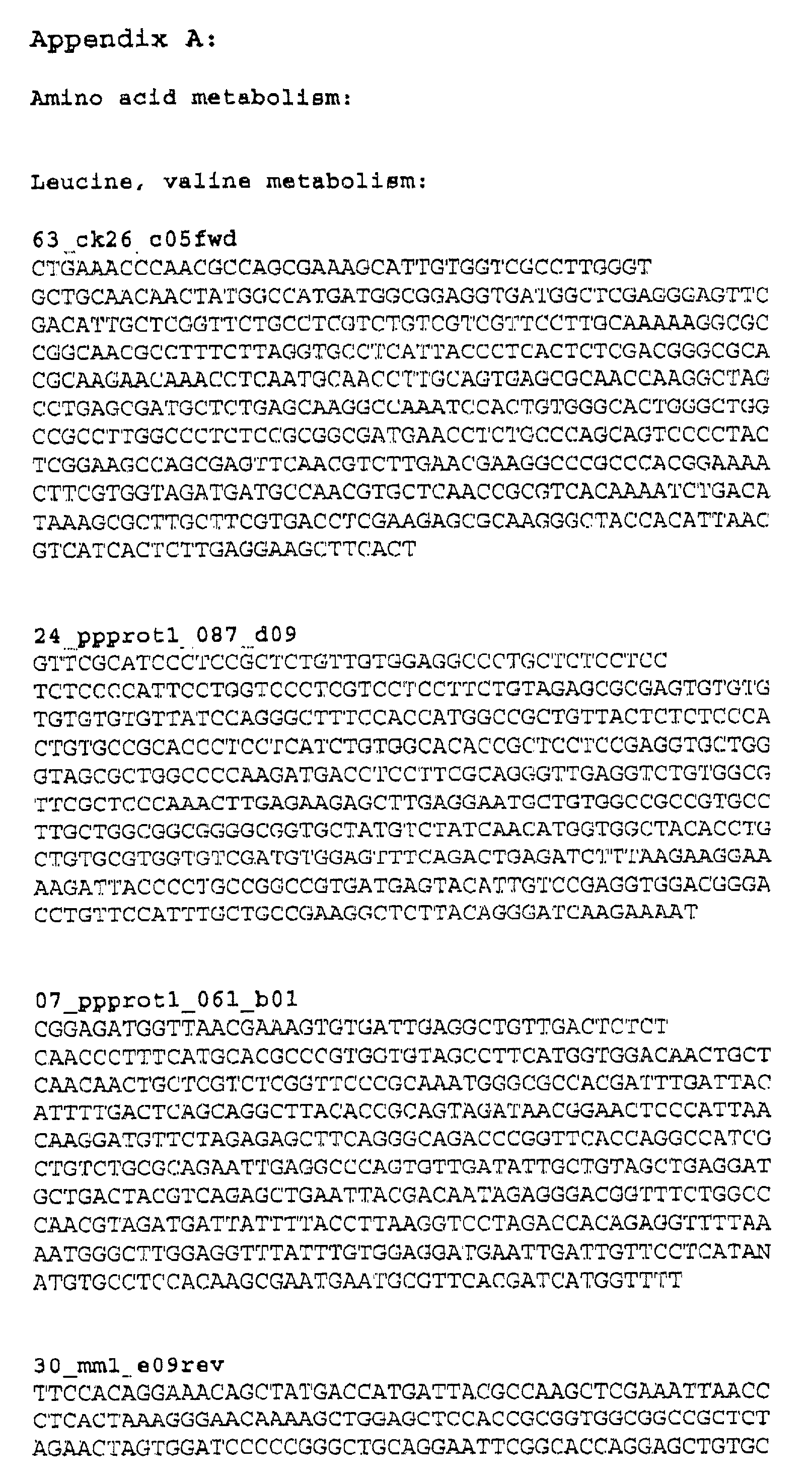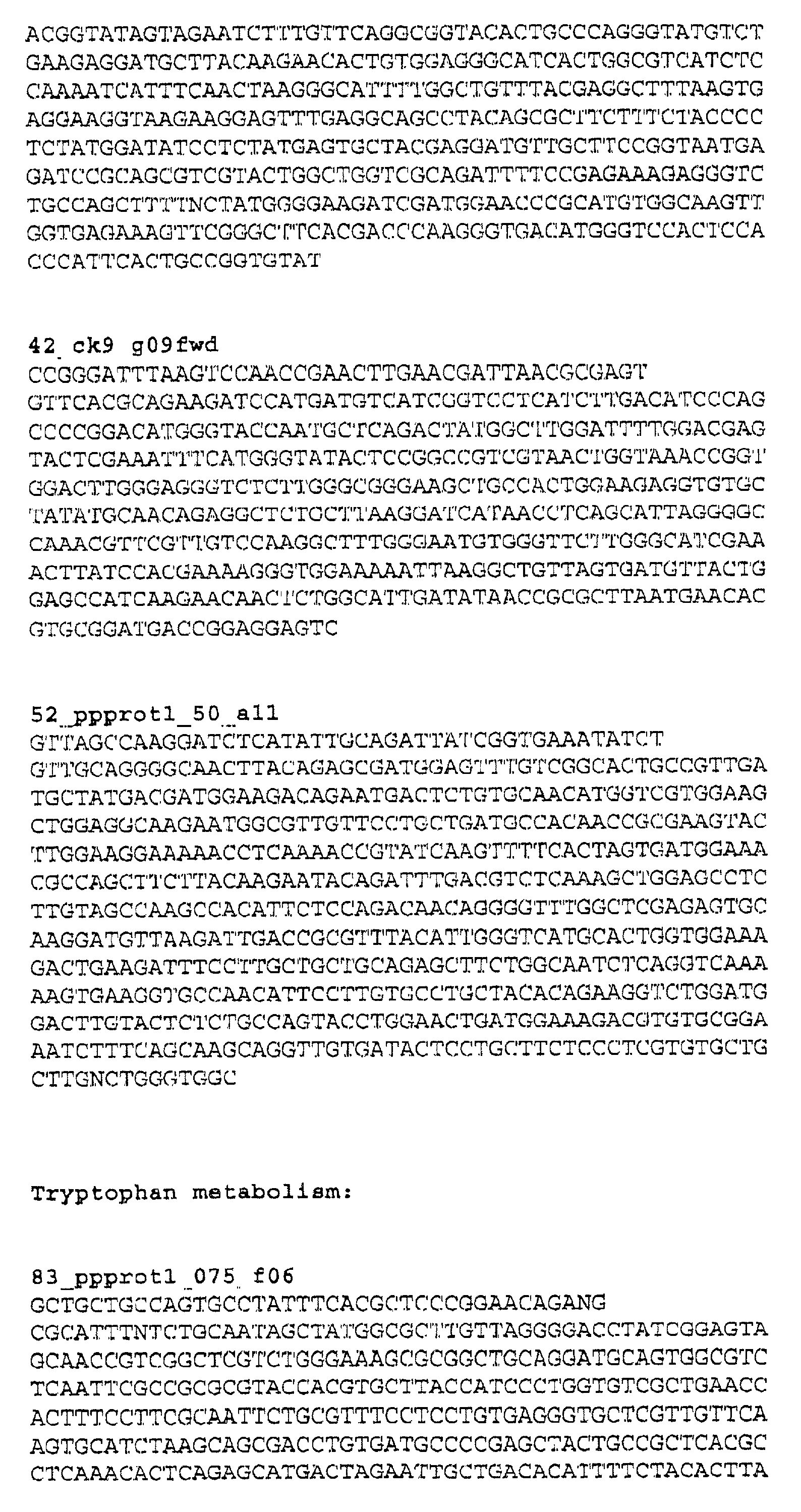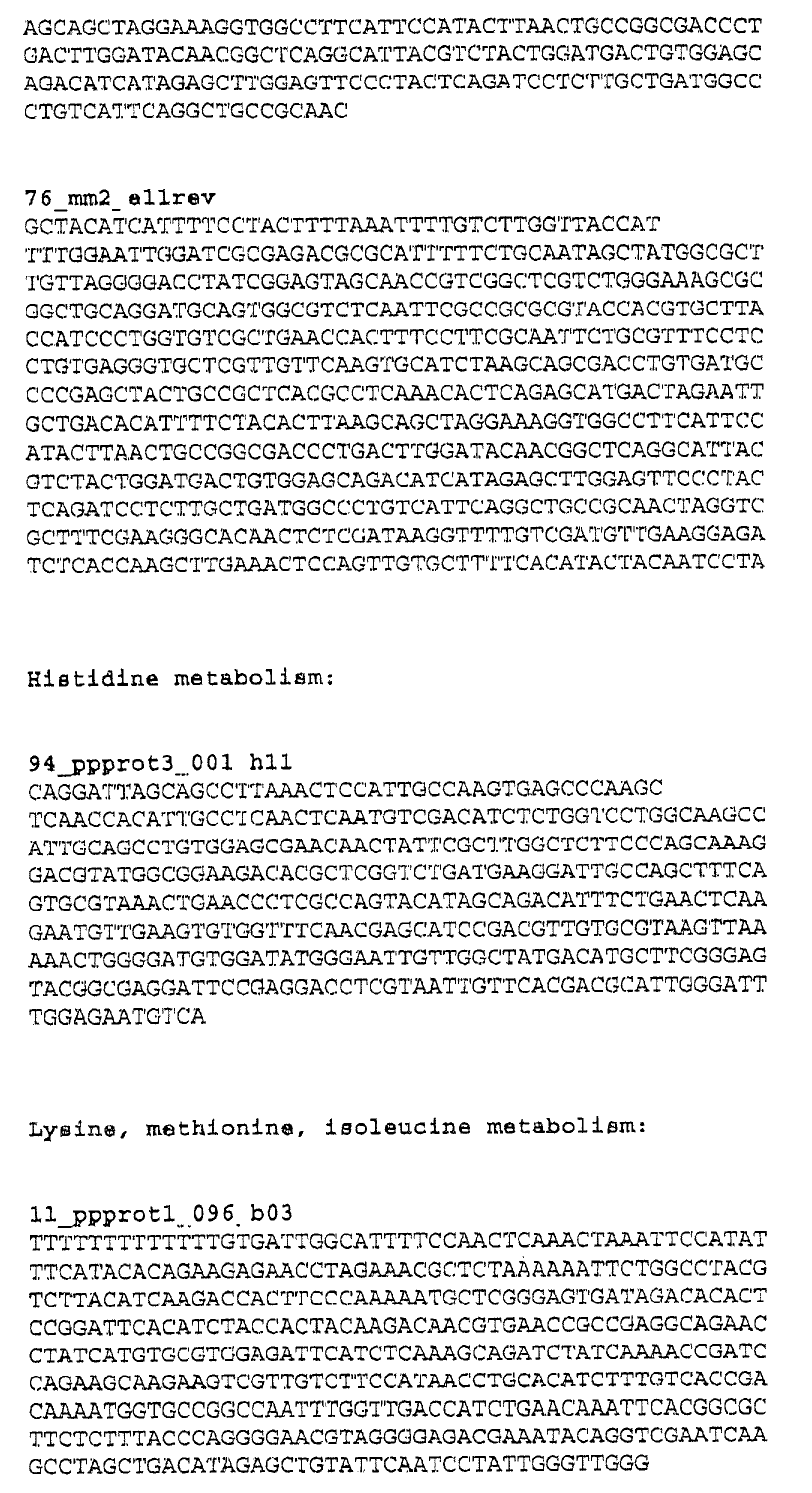Moss genes from physcomitrella patens encoding proteins involved in the synthesis of amino acids, vitamins, cofactors, nucleotides and nucleosides
- Summary
- Abstract
- Description
- Claims
- Application Information
AI Technical Summary
Benefits of technology
Problems solved by technology
Method used
Image
Examples
example 2
[0212] Total DNA Isolation from Plants
[0213] The details for the isolation of total DNA relate to the working up of one gram fresh weight of plant material.
[0214] CTAB buffer: 2% (w / v) N-cethyl-N,N,N-trimethylammonium bromide (CTAB); 100 mM Tris HCl pH 8.0; 1.4 M NaCl; 20 mM EDTA.
[0215] N-Laurylsarcosine buffer: 10% (w / v) N-laurylsarcosine; 100 mM Tris HCl pH 8.0; 20 mM EDTA.
[0216] The plant material was triturated under liquid nitrogen in a mortar to give a fine powder and transferred to 2 ml Eppendorf vessels. The frozen plant material was then covered with a layer of 1 ml of decomposition buffer (1 ml CTAB buffer, 100 ml of N-laurylsarcosine buffer, 20 ml of b-mercaptoethanol and 10 ml of proteinase K solution, 10 mg / ml) and incubated at 60.quadrature. C. for one hour with continuous shaking. The homogenate obtained was distributed into two Eppendorf vessels (2 ml) and extracted twice by shaking with the same volume of chloroform / isoamyl alcohol (24:1). For phase separation, cent...
example 3
[0217] Isolation of Total RNA and Poly-(A)+ RNA from Plants
[0218] For the investigation of transcripts, both total RNA and poly-(A).sup.+ RNA were isolated. The total RNA was obtained from wild-type 9d old protonemata following the GTC-method (Reski et al. 1994, Mol. Gen. Genet., 244:352-359).
[0219] Isolation of PolyA+ RNA was isolated using Dyna Beads.RTM. (Dynal, Oslo) Following the instructions of the manufacturers protocol. After determination of the concentration of the RNA or of the poly-(A)+ RNA, the RNA was precipitated by addition of {fraction (1 / 10)} volumes of 3 M sodium acetate pH 4.6 and 2 volumes of ehanol and stored at -70.quadrature. C.
example 4
[0220] cDNA Library Construction
[0221] For cDNA library construction first strand synthesis was achieved using Murine Leukemia Virus reverse transcriptase (Roche, Mannheim, Germany) and olido-d(T)-primers, second strand synthesis by incubation with DNA polymerase I, Klenow enzyme and RNAseH digestion at 12.degree. C. (2 h), 16.degree. C. (1 h) and 22.degree. C. (1 h). The reaction was stopped by incubation at 65.degree. C. (10 min) and subsequently transferred to ice. Double stranded DNA molecules were blunted by T4-DNA-polymerase (Roche, Mannheim) at 37.degree. C. (30 min). Nucleotides were removed by phenol / chloroform extraction and Sephadex-G50 spin columns. EcoRI adapters (Pharmacia, Freiburg, Germany) were ligated to the cDNA ends by T4-DNA-ligase (Roche, 12.degree. C., overnight) and phosphorylated by incubation with polynucleotide kinase (Roche, 37.degree. C., 30 min). This mixture was subjected to separation on a low melting agarose gel. DNA molecules larger than 300 basepai...
PUM
| Property | Measurement | Unit |
|---|---|---|
| Fraction | aaaaa | aaaaa |
Abstract
Description
Claims
Application Information
 Login to View More
Login to View More - R&D
- Intellectual Property
- Life Sciences
- Materials
- Tech Scout
- Unparalleled Data Quality
- Higher Quality Content
- 60% Fewer Hallucinations
Browse by: Latest US Patents, China's latest patents, Technical Efficacy Thesaurus, Application Domain, Technology Topic, Popular Technical Reports.
© 2025 PatSnap. All rights reserved.Legal|Privacy policy|Modern Slavery Act Transparency Statement|Sitemap|About US| Contact US: help@patsnap.com



